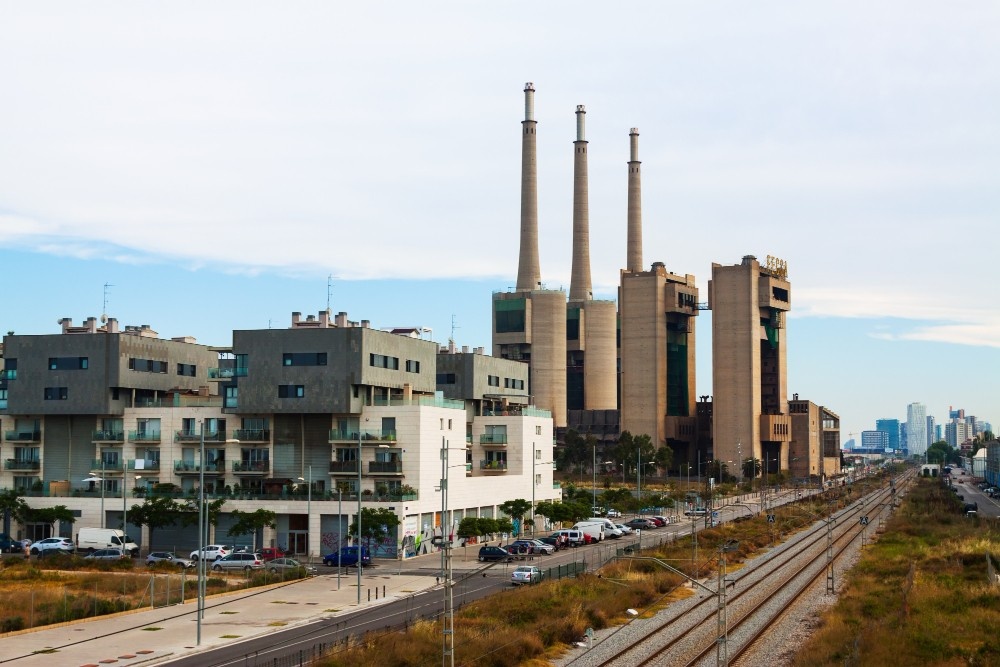
Building Energy-Positive Factories: How to Generate More Energy Than You Consume?
With the demand for sustainability growing in the industrial sector, businesses are moving to energy-positive factories. These facilities don’t just reduce their energy consumption; they generate more than they use.
An energy-positive factory isn’t just a futuristic dream, it’s a practical goal for companies looking to reduce their carbon footprint and reduce costs.
In this article, we’ll explore the concept of energy-positive factories, how they work, and the key steps to achieving one. Also, we’ll look at some best practices and technologies available to businesses in India to make them energy-positive operations.
What is an Energy-Positive Factory?
The term energy-positive factory refers to a facility that generates more energy than it consumes over a specified period. The concept of an energy-positive factory takes energy efficiency a step further by both minimizing energy consumption and creating surplus energy. This surplus can then be fed back into the grid or used to power other facilities, making it a net energy producer.
The concept involves using renewable energy sources, implementing energy-efficient practices, and using cutting-edge technologies to minimize waste and maximize energy production.
Why Should Factories Become Energy-Positive?
Factories consume vast amounts of energy, contributing significantly to global greenhouse gas emissions. For environmental reasons, changing from energy-negative to energy-positive operations is an attractive option.
Here’s why it matters:
- Environmental Impact: By generating more energy than they consume, factories can help reduce their carbon footprint, combat climate change, and contribute to global sustainability efforts.
- Cost Savings: Energy-positive factories reduce or eliminate their reliance on external power sources, leading to substantial cost savings over time. These savings can be reinvested into other areas of the business for growth and innovation.
- Energy Independence: By producing their own energy, factories can reduce dependency on external energy providers, ensuring a more resilient operation in the face of fluctuating energy prices or supply disruptions.
- Regulatory Compliance: As governments globally tighten environmental regulations, adopting energy-positive practices helps factories comply with sustainability regulations and avoid potential fines or penalties.
How Can Factories Generate More Energy Than They Consume?
Building an energy-positive factory requires integrating several strategies and technologies.
Here’s a closer look at the key steps to achieving an energy-positive factory:
1. Using Solar Power
One of the most common and effective ways to generate surplus energy is through solar power. Installing solar panels on factory rooftops or open land surrounding the facility allows for the capture of sunlight, which can then be converted into electricity.
In India, where sunlight is abundant for much of the year, solar power is an ideal choice. Many factories are opting for large-scale solar installations that not only provide energy for their own operations but also create surplus electricity that can be sold to the grid.
2. Using Wind Energy
Wind energy is another renewable resource that can significantly contribute to an energy-positive factory. Installing wind turbines can help factories generate electricity, particularly in areas where wind speeds are consistently strong.
In combination with solar power, wind energy can provide a steady and reliable supply of energy, making it a key component of a factory’s energy-positive strategy.
3. Implementing Energy Storage Solutions
The storage of surplus energy generated by renewable energy sources is essential. Energy storage systems, such as batteries or other advanced technologies, allow factories to store excess energy produced during the day to use at night or during periods of low production.
Energy storage is crucial to a positive energy strategy, since it ensures a steady supply of energy despite the intermittent nature of solar and wind power.
4. Energy Efficiency and Smart Technologies
Generating surplus energy isn’t just about producing more; it’s also about consuming less.
To achieve an energy-positive status, factories must implement energy-efficient practices and technologies. These might include:
- LED lighting: Replacing traditional lighting with LED bulbs reduces energy consumption significantly.
- Advanced HVAC systems: Modern heating, ventilation, and air conditioning systems consume less power while improving indoor air quality and comfort.
- Smart sensors and automation: Implementing smart sensors and automation can help monitor and optimize energy consumption across the facility, ensuring that machines and equipment only use energy when needed.
- Energy-efficient machinery: Upgrading older machinery to energy-efficient alternatives helps to reduce overall energy consumption.
5. Waste-to-Energy Technology
Factories produce significant amounts of waste, which can often be converted into energy. Waste-to-energy technologies, such as anaerobic digesters or biomass systems, allow for the conversion of organic waste into biogas, which can then be used to generate electricity.
This process not only helps reduce waste but also generates valuable energy, contributing to the factory’s energy-positive status.
How to Build an Energy-Positive Factory in India?
Building an energy-positive factory in India requires careful planning and the right combination of technologies. The country’s abundant natural resources, particularly solar energy, make it an ideal place for factories to transition to energy-positive operations.
Here are some practical steps for Indian businesses:
1. Evaluate your energy needs
An energy-positive factory requires a thorough assessment of energy needs. It involves analyzing current energy consumption patterns, identifying areas for energy reduction, and selecting the most appropriate renewable energy sources.
2. Government Incentives and Support
India’s government has been promoting renewable energy through various schemes and incentives. Companies can take advantage of subsidies, tax breaks, and low-interest loans to finance their transition to renewable energy.
The Solar Energy Corporation of India (SECI), for example, provides incentives for businesses installing solar power systems. These incentives can help reduce the initial investment required to set up solar and wind energy systems.
3. Collaborate with Experts
To design and execute an energy-positive factory, businesses should collaborate with experts in renewable energy, architecture, and industrial engineering.
VMS Consultants, a leading consultancy offering engineering, architecture, and project management services, can provide invaluable support in planning and implementing energy-efficient and sustainable solutions for industrial facilities.
Achieving Long-Term Sustainability and Cost Savings
To become an energy-positive factory, you must make long-term, sustainable changes that benefit the environment and the bottom line.
With renewable energy, energy-efficient technologies, and reducing waste, factories can create a self-sustaining energy ecosystem that saves money over time.
The right planning and investments in technologies can lead to a greener future for Indian factories while ensuring continued operational success.
Build a Sustainable Future with VMS
If you’re ready to take the first step toward energy independence and sustainability, VMS Consultants is here to guide you through the process, from design to implementation, ensuring your industrial facility becomes more energy-efficient and cost-effective.
Partner with VMS Consultants to build a facility that produces more energy than it consumes.





